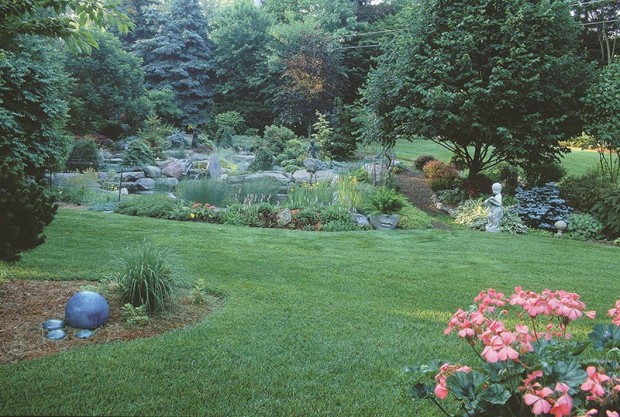
How to restore weed-infested lawn areas to healthy turf grass
My mailbox is full! One out of four letters reads: “My lawn is being taken over by (description or sample of weed). I’ve tried weedkiller but it didn’t work. What should I do?”
News flash: In many cases, the weeds are not taking over your lawn. They are your lawn. Perhaps you should think twice about trying to kill them.
The grass has been dying out for years, thinned by drought, heat and wildly oscillating winter temperatures over snowless, uninsulated turf. It’s tempting to think that a few passes with the right magic wand will fix it, but it won’t happen that way.
Portrait of a dying lawn
Five years ago, your sod may have had a dozen bundled grass blades in each square inch, the individual growing points snuggled tight against one another. Those leafy sprays were content to be packed in with their fellows since they were all equals—and polite, as plants go. They were also healthy, each one tapped into enough water and nutrients to meet its needs.
Then as soil moisture dwindled, these plants began to strain. Whenever temperatures soared you could almost hear them wheeze, as their pores closed in defense against dehydration. Although those pores release water vapor and have to be stopped like leaks when heat and drought combine, they also serve as intake ports for atmospheric gases. Without those gases that are essential ingredients in photosynthesis, the whole sunlight-into-sugar process stops. The plant must switch to emergency power—burning the starch stored in its roots. This literally reduces the size of the roots. As they shrink, so does their reach. They cover a smaller, shallower area so the plant has even less moisture to live on.
One by one, the grass blades sicken and die from starvation, dehydration or diseases they were once vigorous enough to stave off. In the new open spaces, sun penetrates and dark soil absorbs the radiation, heating and stressing the roots further.
The advent of rude, greedy weeds
Meanwhile, the sun has now reached and spurred the germination of heat-loving seeds such as crabgrass that can wait decades for such an opportunity.
These newcomers to the grassy carpet are not polite. Crabgrass is all elbows and explosive growth. Spurge, purslane, ground ivy and others don’t even have the manners to stand up straight. They sprawl and worm their way between grass blades. All of them are better able to function in hot, dry times and compete heavily with the sickly turf for available water. Thieves like dandelion and Queen Anne’s lace put all their seedling energy into deep tap roots that drain the lower reaches of the soil.
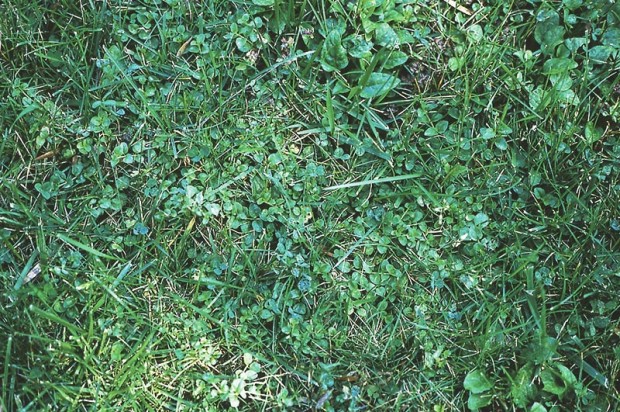

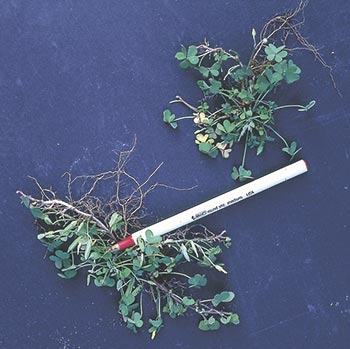
Creeping along beneath our notice
In its first year, all this trouble may escape our notice. It’s a few discolored areas of maroon-tinged, clover-like oxalis, chartreuse nutsedge or gray-green henbit. Those pioneers make lots of seed, however. They also crowd and shade out more lawn. By seed and runner they move quickly into every new opening.
Winter kill leaves even more gaps in the sod, just in time for cool season weeds such as chickweed and creeping speedwell to sprout and settle in. Since they germinate between November and March, the gardener spreading grass seed in April is too late, and her well-intentioned fertilizer assists the wrong plants.
After years of escalating losses, we finally notice the trouble. Restoring that battered greensward now is more a matter of starting over than kicking out a few weeds.
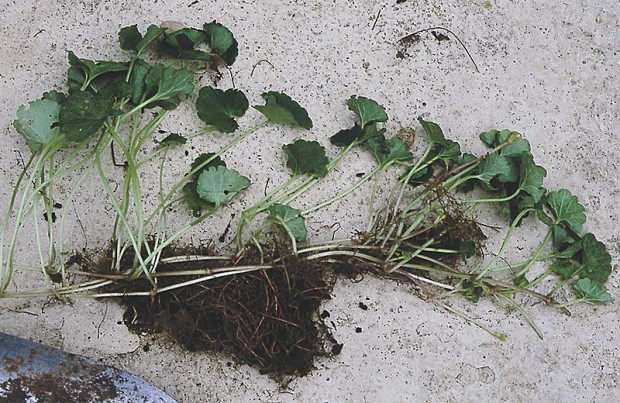
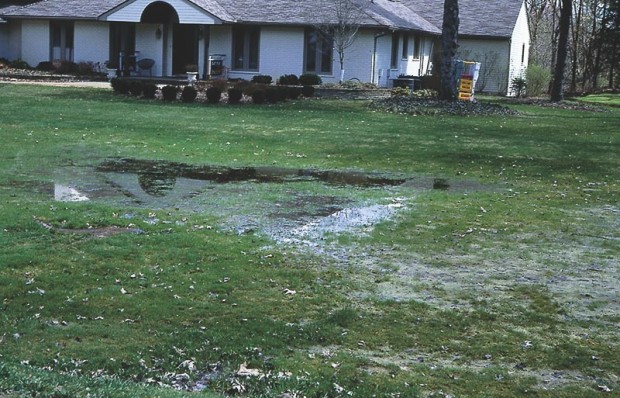
Starting over
It’s best to sow seed between the third week of August and the middle of September when conditions are prime. Fall rains and milder temperatures support seed germination and establishment.
You’ll need broadleaf weedkiller since handweeding thousands of square feet that’s mostly weeds is usually not practical. Don’t use preemergent, though, if you intend to sow grass seed.
If there is almost no grass left in that field mowed short you’ve been calling “lawn,” kill the whole shebang with a non-selective herbicide such as glyphosate. Whichever route you take, time it so the herbicide finishes its work before the prime time window for sowing closes.
Oh, but you said that weedkiller didn’t work. With no offense intended, I think that was not the fault of the herbicide. You may have applied it when it couldn’t work, such as in the hottest part of summer when the target weeds were metabolizing too slowly to be affected. Or perhaps you spread a weedkiller over dry greens. Rather than sticking where they could do the most harm, the pellets slid to the soil and dissolved with little effect. Maybe you did kill some weeds, but without follow-up help your lawn couldn’t recolonize the weeded spots. By the time you looked again, the bad guys had reasserted themselves.
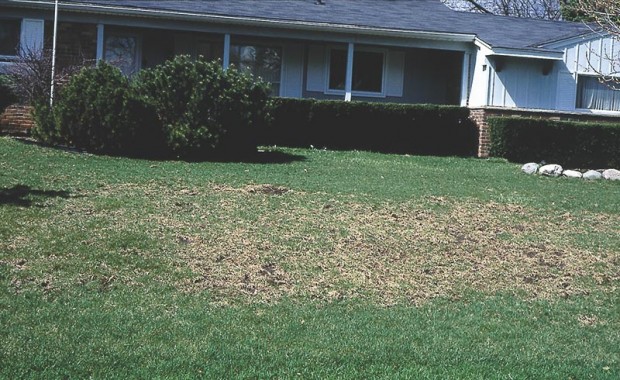
Seeding like you mean it
After killing the weeds you’ll need grass seed. Buy a premium blend—bluegrass for sun, fescue for partly shaded areas. “Premium” is an important term. It means the seeds are from recently developed strains of grass bred for disease resistance. In a lawn as ravaged as yours, disease organisms have found a toehold and could devastate susceptible seedlings.
You can sod rather than seed. But sod is more expensive than seed, while both are quick to take in September.
Don’t spread seed on top of dead weeds. Seed must rest on moist soil to sprout and survive. Till lightly, make numerous passes with a core aerator, work the soil with an iron garden rake—whatever it takes to loosen and expose the earth. Smooth it and water it so it’s settled, moist and level like a tray of potting mix ready for seeding.
While you’re at it, address other problems that have undermined the health of your turf. Level or drain puddled and soggy areas. Use a garden fork to pierce and break up the compacted layer that’s been there, 6 to 9 inches down.
If a hard pan exists all over your property, you could rent an irrigation pipe-pulling tractor and drive it back and forth with its pipe slitter lowered but no pipe being played out. This will knife into or through that dense, airless, water- and root-stopping layer so soil dwelling creatures can finally move in and soften it.
Rake lightly after seeding to tumble the seeds with soil crumbs at the surface. No straw cover is necessary—sod farms don’t mulch! Don’t water right away. Wait for Nature to do her thing. Fall rains will coax the grass up and keep it growing. Water only if Nature fails you and the soil begins to dry after the seed has sprouted.
Take it from there
Fertilize when the new grass is 1-1/2 inches tall. Mow when it reaches 3 to 4 inches, just barely clipping its tips with a freshly-sharpened blade—dull blades can uproot the seedlings. Most important, get down on your knees to watch for weeds, then kill or pluck them as they appear.
While you’re down there, apologize to your lawn and promise to water often, lightly—so the water isn’t wasted below summer-shortened lawn roots—at midday when it’s hot so the mist cools the air and pores can stay open.
These directions may sound like heresy but have been proven effective by tests at Michigan State and other universities. “Water deep and infrequently” sounded good but had not been empirically tested before 1995 and turned out to be inappropriate for lawn species.
Tell it you’ll mow it high so it has enough body to shade out weeds and cool its own roots. Mean it when you say you’ll fertilize at the start and end of each year with a slow-release, soil-building organic fertilizer.
Finally, promise that you’ll pay closer attention from now on, so problems won’t get so out of hand.
Or take it in another direction
Reviving a lawn isn’t your cup of tea? I can sympathize. Lawn care bores and frustrates me—millions of clones demanding my help to grow evenly across sites where soil conditions, sun and moisture vary foot by foot. Yet I respect its place in the landscape and all the work that’s gone into breeding grasses and developing lawn care products that work even in our clumsy hands and laughable sites. Try as long and hard as you like, you won’t find another plant so visually perfect as edging for flower beds, that we can grow with so little care yet walk on regularly, enjoy in all four seasons and depend on for decades of service. Like me, you’d better learn to care for it correctly.
Article by Janet Macunovich and photos by Steven Nikkila, www.gardenatoz.com.
